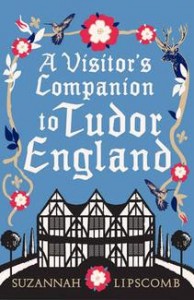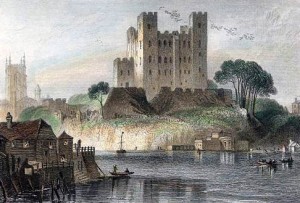I am frequently asked two questions: why am I a Tudor historian? And why do I think people remain fascinated by this period? The answer is the same: the Tudor era has all the best stories.
Consider: the remarkable sixteenth century contains our tabloid king – the much married Henry VIII – and our virgin queen – the unmarried Elizabeth I – and huge religious change – the overthrow, restoration and eventual displacing of the Roman Catholic church in England; centuries-old monasteries dissolved; heretics burnt and priests tortured. It is an age of threats against England – the attempted French invasion and the Spanish Armada – and of the discovery and colonisation of new worlds, the beginnings of empire and the founding of the navy. It is the age of Holbein and Shakespeare, of glorious architecture and palaces, and of some of the most extraordinary characters in British history.
Working on my most recent book, I was struck anew by the poignancy of the stories of those individuals – of the Protestant martyrs Ridley, Latimer and Cranmer burnt in a ditch outside the city walls in Oxford; or the tale of the twice-widowed 26-year-old 6ft and utterly beautiful Mary, Queen of Scots, who was imprisoned in England for 18 miserable years; or Sir Walter Ralegh, gaoled in the Tower of London for almost as long. During his 13 years of confinement, Ralegh wrote the one million words of his History of the World, and was only released to sail to Guiana in search of the fabled city of gold, El Dorado. He naturally failed to find it and returned empty-handed to meet his death by axe. Or there’s the story of another of Elizabeth I’s favourites, Sir Christopher Hatton, who spent his fortune on building and buying houses like Holdenby and Kirby Hall, in the hope that Elizabeth would visit and be wooed by him. She never came and he died in debt to the tune of £42,000 – around £5 million today.
A Visitor’s Companion to Tudor England is a guide to these stories and to the places where you can experience these moments from the past today.
In choosing my 50 places, I had four criteria in mind. The first was there had to be something worth seeing.
Many Tudor houses and palaces – like Theobalds, William Cecil, Lord Burghley’s grand house, or Nonsuch Palace – don’t survive, and this is especially the case in London, because of the devastating effects of the Great Fire of 1666. Where fragments from these places do exist – like Richmond Palace’s gatehouse or the arches at Holdenby House – we visit them.
There remain, however, lots of gorgeous places still standing: houses like Montacute, Hardwick, Burghley, or Kirby; the smaller halls like Little Moreton and Gawsworth; or hidden gems like Sandford Orcas Manor House. We visit fortresses and abbeys, castles and tombs. We pilgrimage up to the Walker Art Gallery and to the National Portrait Gallery to stand before the great man himself.
In a couple of instances there are mere remains that have important stories to tell, like the sixteenth-century doors at Balliol College that were licked by the flames of the martyrs’ pyres. At one point we visit a 500-year-old tree, on a little road between Hethersett and Wymondham in Norfolk, where Robert Kett was said to have gathered thousands of rebels in 1549 to march on Norwich in protest against the enclosure of lands under Edward VI.
The second principle was that as well as something to see, there needed to be a cracking good story. This ruled out some places that are lovely to visit but where nothing really happened, but in many cases, the stories and places came together in beautiful confluence. At Thornbury Castle, the story of the person who owned it – Edward Stafford, third Duke of Buckingham – and his downfall are practically played out in the stonework. Buckingham was executed in 1521 for listening to prophecies that he would one day be king, and his intended palace-fortress at Thornbury expresses the same regal intent. His death stopped work on the castle: only one tower out of four was ever finished (Henry VIII and Anne Boleyn stayed in this tower in 1535 in a room that you too can now sleep in), and some of the ranges look like ruins, but are actually building sites – they were simply never finished.
There are also stories of places that shaped people – the childhood home of Anne Boleyn at Hever Castle, and Hatfield Old Palace, where Elizabeth I discovered she was queen. And there are crucial moments that happened at places – Anne of Cleves’s fateful meeting with Henry VIII happened at Rochester Castle; Prince Arthur died at Ludlow Castle, and with his death, the entire destiny of the Tudors changed.
My final two criteria were that I should cover the geographical diversity of England as much as the south-loving Tudors allowed, and that I should try to represent virtually every significant person or story of the period. I wanted it to be very much a companion to the historical visitor to the period, as well as to today’s visitor to these 50 sites.
I believe fervently in the value of going to historic places. As a research curator at Hampton Court Palace (where my office was beneath Henry VIII’s council chamber, and the stairs I used every day were the back stairs on which Thomas Cromwell manoeuvred and politicked), I learnt the wonder of being where history happened: of walking in the footsteps of Henry VIII, or standing where Shakespeare stood. There is something about these places that makes one feel that one could reach out and touch the past. When I spoke to Natalie Grueninger of On the Tudor Trail about this some time ago, she put it perfectly: in those places, only time and not space separates you from the people of the past.
Historian Johan Huizinga wrote that ‘the feeling of being in contact with the past is a sensation as deep as the purest enjoyment of art, it is an almost ecstatic sensation; no longer being myself, of overflowing into the world around me, of touching the essence of things, of through history experiencing the truth’. I believe that everyone should have an opportunity to experience that sense of immediate contact with the past, and through history, experience the truth. I hope, in some small way, that my book helps that happen.
Suzannah Lipscomb
A Visitor’s Companion to Tudor England is published in the UK by Ebury (RRP £12.99).





















Dr Lipscomb – your book is an absolute breath of fresh air into the history of our nation’s stormy past. I’ve enjoyed reading it very much. This summer, I’ve decided that I will be using it as a guide to help my 8 year old son understand our rich Tudor past. So, we will be trying to visit many of the places you have identified. My son is dyslexic, so the written word is hard for him to read, but using your book as our practical guide to places we will visiting, I’m hoping he’ll end up being as much enthralled in our nation’s history as I am.
http://www.essexvoicespast.com
A great post. I will look forward to reading this book, I have been lucky enough to have visited some of the above. Does your book mention Gainsborough Old Hall, in Gainsborough, a beautiful black/white Tudor manor house, belonging to one of Catherine Parr’s late husbands, I think Henry visited twice, once with the ill-fated Catherine Howard
I knew Mary Queen of Scots was above average height of a women of those times, and considered tall, but had no idea she was 6ft tall!, thats very tall for a woman of now…